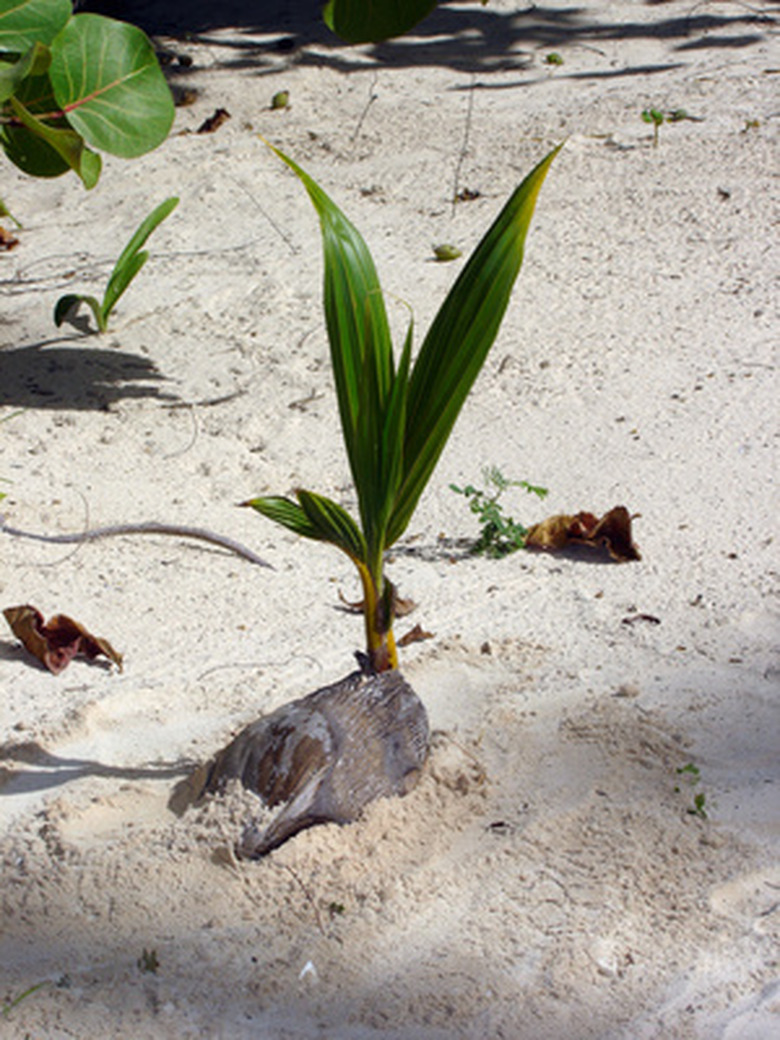Which Islands In Hawaii Grow Coconuts?
The coconut tree (Cocos nucifera), known as "niu" in Hawaii, was originally introduced to the islands by the original Polynesian settlers. Although the island chain lies near the northern boundaries of the main coconut-growing regions of the world, coconut trees thrive in the warm, balmy climate of Hawaii. Coconuts were an important resource for ancient Hawaiians, providing food, liquid and building materials. Coconut fiber was used to lash the warrior's koa wood canoes and the shells were used as the base of the shark skin-covered piniu, or Hawaiian knee drum. Coconut trees grow on all eight of the main Hawaiian islands, (Ni'ihau, Kaua'i, O'ahu, Moloka'i, Lana'i, Maui, Kaho'olawe, and Hawai'i) and Layson, or Kauo, an uninhabited Hawaiian island in the northwest part of the chain. To this day, ancient coconut groves still exist on several islands.
Hawaii
The Big Island of Hawaii is home to one of the chain's most sacred sites, Pu'uhonua O Honaunau. A city of refuge for ancient Hawaiian lawbreakers, the site also includes a large ancient coconut grove that shades the royal fishponds and residences. Your walk through the now-national park begins at the palace grounds, which are surrounded by the old coconut grove. The leeward side of the Big Island, where Kona is located, provides ideal conditions for coconut trees: regular rainfall, high humidity and warm temperatures.
- The coconut tree (Cocos nucifera), known as "niu" in Hawaii, was originally introduced to the islands by the original Polynesian settlers.
Molokai
A little more than a mile from the town of Kaunakakai, at the southern portion of the island of Molokai, you will find an ancient grove of coconut trees. Known as Kapuaiwa Coconut Grove, the trees were planted during the reign of King Kamehameha V, at his bequest, to shade his royal ponds. There were originally more than 1,000 trees on 10 acres of land, and today you will find several hundred. Entrance into the grove is forbidden because of the danger of falling coconuts, but there is a beach park adjacent to the grove that offers a viewing area.
Oahu
Legend has it that coconut trees were planted in what is now known as the Helumoa Coconut Grove at the bequest of Kakuhihewa, a descendent of Mailikukahi, the chief of the island of Oahu, after a run-in with a supernatural chicken. The grove spread to eventually contain more than 10,000 coconut trees. In the late 1700s King Kamehameha the Great built his home, Kuihelani, on this site in the middle of the grove. Later, Kamehameha V built a home there as well. Today, what is left of this legendary coconut grove is a stop along the Waikiki Historic Trail (marker 12), at the intersection of Kalakaua Avenue and Beach Walk in Waikiki.
- A little more than a mile from the town of Kaunakakai, at the southern portion of the island of Molokai, you will find an ancient grove of coconut trees.
- Legend has it that coconut trees were planted in what is now known as the Helumoa Coconut Grove at the bequest of Kakuhihewa, a descendent of Mailikukahi, the chief of the island of Oahu, after a run-in with a supernatural chicken.
